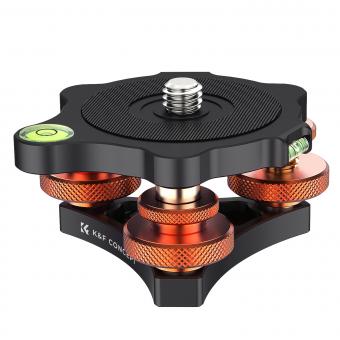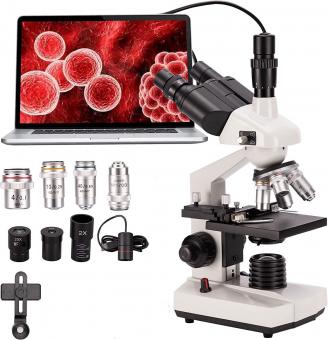What Does A Base Do On A Microscope ?
In a microscope, the base serves as the foundation and support for the entire instrument. It is typically a sturdy and stable platform that provides stability and balance to the microscope. The base is designed to hold all the components of the microscope, including the optical system, stage, and focusing mechanisms. It ensures that the microscope remains steady during use, preventing any vibrations or movements that could affect the quality of the image. Additionally, the base often contains the power switch and other controls for operating the microscope. Overall, the base plays a crucial role in maintaining the stability and functionality of the microscope.
1、 Stability: Provides a sturdy foundation for the microscope.
What does a base do on a microscope? The base of a microscope serves several important functions, with stability being one of the primary purposes. The base provides a sturdy foundation for the microscope, ensuring that it remains steady and balanced during use. This stability is crucial for obtaining clear and accurate images under the microscope.
The base is typically made of a heavy material, such as metal or high-density plastic, to enhance stability. It is designed to distribute the weight of the microscope evenly, preventing any wobbling or shaking that could disrupt the viewing experience. This is particularly important when working with high magnification levels, as even the slightest movement can cause the image to blur.
In addition to stability, the base also houses the illuminator or light source of the microscope. The light source is usually located in the lower part of the base and provides the necessary illumination to view the specimen. The base may also contain the power switch and controls for adjusting the intensity of the light.
Furthermore, the base often includes a stage or platform where the specimen is placed for observation. The stage is typically equipped with clips or mechanical holders to secure the specimen in place. It may also have movable controls to adjust the position of the specimen for better viewing.
In recent years, with advancements in technology, some microscopes have incorporated additional features into the base. For example, digital microscopes may have built-in cameras or connectivity options to capture and share images or videos of the specimens. These modern bases may also include USB ports or memory card slots for data transfer and storage.
In conclusion, the base of a microscope plays a crucial role in providing stability and support for the instrument. It ensures that the microscope remains steady during use, allowing for clear and accurate observations. Additionally, the base may house the illuminator, stage, and other features that enhance the functionality and convenience of the microscope.

2、 Support: Holds the various components of the microscope together.
The base of a microscope serves as a crucial component that holds all the various parts of the microscope together. It provides stability and support to the entire microscope system, ensuring that it remains steady during use. The base is typically a sturdy, flat platform that acts as a foundation for the microscope.
One of the primary functions of the base is to provide a stable platform for the microscope to rest on. This stability is essential for obtaining clear and accurate images through the microscope. Without a solid base, the microscope would be prone to vibrations and movements, which would result in blurry or distorted images.
Additionally, the base of the microscope often contains the illumination system. This system includes a light source, such as a bulb or LED, and various lenses and mirrors that direct the light towards the specimen being observed. The base houses these components and ensures that they are properly aligned and secured.
Moreover, the base of a microscope may also have additional features depending on the type of microscope. For example, in some microscopes, the base may include a mechanical stage that allows for precise movement and positioning of the specimen. In others, the base may have a built-in power supply or controls for adjusting the intensity of the light source.
In recent years, with advancements in technology, there have been developments in microscope bases. Some modern microscopes now incorporate digital imaging systems and computer interfaces into their bases, allowing for real-time image capture and analysis. These advanced bases may also include connectivity options for data transfer and remote control.
In conclusion, the base of a microscope plays a vital role in providing stability, support, and housing various components of the microscope. It ensures that the microscope remains steady during use, allows for proper alignment of the illumination system, and may incorporate additional features depending on the microscope's design.

3、 Weight distribution: Helps distribute the weight of the microscope evenly.
What does a base do on a microscope? The base of a microscope serves several important functions, with weight distribution being one of them. The base is the bottom part of the microscope that provides stability and support to the entire instrument. It is typically made of a heavy material, such as metal or cast iron, to ensure that the microscope remains steady during use.
Weight distribution is crucial because it helps distribute the weight of the microscope evenly, preventing it from toppling over or shaking while in use. This is particularly important when using high magnification objectives, as even the slightest movement can disrupt the image being observed. By having a stable base, the microscope remains steady, allowing for accurate and precise observations.
In addition to weight distribution, the base also houses the illumination system of the microscope. Many microscopes have a built-in light source, such as an LED or halogen lamp, which is located in the base. The light passes through the specimen and lenses, allowing for clear visualization of the sample. The base also contains the power supply and controls for adjusting the intensity and direction of the light.
Furthermore, the base of a microscope often includes mechanical components, such as the stage and focus knobs. The stage is where the specimen is placed for observation, and it can be moved in different directions to position the sample under the objective lens. The focus knobs, located on the side or front of the base, allow for precise focusing of the microscope by adjusting the position of the lenses.
In summary, the base of a microscope plays a crucial role in weight distribution, stability, and support. It ensures that the microscope remains steady during use, provides a platform for the illumination system, and houses mechanical components for sample positioning and focusing.

4、 Vibration reduction: Minimizes vibrations that can affect image quality.
The base of a microscope serves several important functions, one of which is vibration reduction. The base is the sturdy and stable platform upon which the microscope is built. It provides a solid foundation for the microscope, ensuring that it remains steady during use and minimizing any vibrations that could potentially affect the quality of the images produced.
Vibrations can be caused by various factors, such as external movements, mechanical components, or even the user's own hand movements. These vibrations can result in blurry or distorted images, making it difficult to accurately observe and analyze specimens under the microscope.
To counteract this issue, microscope manufacturers have incorporated various design features into the base to reduce vibrations. These features may include heavy and dense materials, such as cast iron or steel, which help to absorb and dampen vibrations. Additionally, some microscope bases are equipped with rubber or silicone feet that further isolate the microscope from external vibrations.
In recent years, there has been an increased focus on developing advanced vibration reduction technologies for microscopes. For example, some high-end microscopes now incorporate active vibration control systems that use sensors and actuators to actively counteract vibrations in real-time. These systems can detect even the slightest vibrations and quickly adjust the microscope's position to compensate for them, resulting in significantly improved image quality.
Overall, the base of a microscope plays a crucial role in minimizing vibrations and ensuring the production of clear and sharp images. As technology continues to advance, we can expect further innovations in vibration reduction techniques, leading to even more precise and accurate microscopic observations.









































